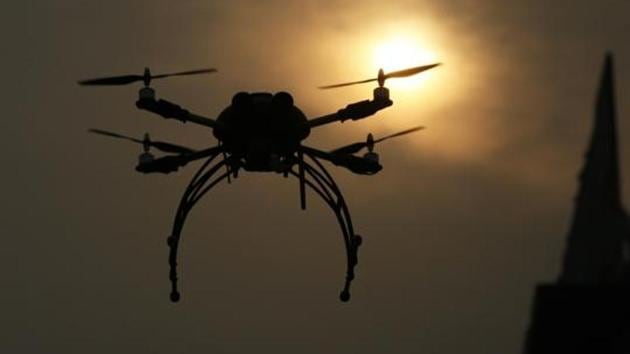Government plans GPS tracking to prevent rogue drones
One possible solution is to have a GPS (global positioning system) trackers installed in all privately owned and operated drones that are registered for use.
The civil aviation ministry is trying to figure out ways of ensuring that drones don’t turn rogue and pose a security threat in areas deemed to be no-fly zones — a quandary that has impeded government efforts to make the operation of unmanned aircraft systems legal in India.

One possible solution is to have a GPS (global positioning system) trackers installed in all privately owned and operated drones that are registered for use.
“The sky is a strategic space and we want to make sure security concerns are taken care of. We are coming close to the operation of drones. World over, everyone is facing the same issue, and we will have a return-to-home button in the drones,” civil aviation minister Hardeep Puri told Hindustan Times.
The original launch date of January 1, 2019 for flying drones in areas other than those barred for security concerns has had to be revised for two reasons: states are yet to map no-drone zones in their airspace; and drones are not equipped with so-called No Permission, No Take-off (NPNT) hardware pre-programmed with no-fly zones.
“The Airports Authority of India (AAI) is working on the portal where drones will be registered. We have received proposals from the industry on the classification of rogue drones and how to track it. It will not be live tracking on the line of flights but something like the road ministry does where every commercial car is fitted with GPS and can be monitored if needed,” said an official at the Directorate General of Civil Aviation (DGCA), the aviation regular. The official requested anonymity.
Operators will be able to apply for permissions and get instant approvals through the Digital Sky Platform, the portal where they will have to register their drones for the use of photography, recreational purposes and for commercial use as taxis or delivery vehicles by companies such as e-commerce retailers.
“The only requirement will be the installation of a Regulatory Flight Tracker Module (RFTM) with NPNT compliance, which will enable the on-boarding of the existing drones onto DGCA’s Digital Sky UTM,” said Sai Pattabiram, founder and CEO of Sree Sai Aerotech Innovations Private Limited. UTM is short for Unmanned Traffic Management.
Pattabiram’s company makes software such as NPNT and GPS for drones and he and other industry representatives are meeting a DGCA task force on drones. About 500,000-600,000 drones are available in India and they are illegal to operate, but easily available, Pattabhiram said. A 2014 ban on drone could not be implemented and the government could not enforce regulations enforced in 2018 for operation of drones either.
“Government need to be clear which drones they need to monitor and identify places where they need to monitor drones. The only way to track existing drones is to have a ministry-supervised GPS system on it; those not complying with it can be classified as rogue drone,” he added
Pattabiram has given a presentation to the DGCA and suggested that drone must be fitted with a call-back button.
Users will be required to do a one-time registration of drones, pilots and owners. For every flight (except nano drones, which weigh less than 250 gms), users will be required to ask for permission to fly through a mobile app, and an automated process will permit or deny the request instantly. The UTM platform operates as a traffic regulator in the drone airspace and coordinates closely with defence and civilian air traffic controllers (ATCs) to ensure that drones remain on the approved flight paths, according to RPAS guidelines that have been put in the public domain.
For flying in controlled airspace, the filing of a flight plan and obtaining an Air Defence Clearance (ADC) /Flight Information Centre (FIC) number will be necessary. Among the no-drone zones are areas around airports, near the international border, Vijay Chowk in New Delhi near where important government buildings, Parliament and Rashtrapati Bhavan are located, state secretariat complexes in state capitals, and other strategic locations and vital military installations.
A case under the Indian Penal Code can be filed for flying a drone in a prohibited zone.






